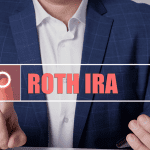Home > Retirement > New 401(k) Contribution Limits for 2022
New 401(k) Contribution Limits for 2022
A reference to retirement planning is incomplete without mentioning the 401(k) retirement account. One of the earliest retirement plans instituted by the Internal Revenue Service (IRS) in 1978 to encourage saving, the 401(k) is an employer-sponsored retirement savings plan. The employee’s contributions are automatically deducted from their paycheck and invested in a fund that the employee chooses, and the employer may match up to 50% of the contribution made. The funds continue to grow in this account and offer you compounded growth till the time the money remains invested in the plan.
However, an investor cannot simply put all his money in a 401(k) and claim tax breaks. There are certain limitations to contributions that can be made by an investor in a year that is revised by the IRS annually. To gain better clarity and understanding about a 401(k), its contribution limits, tax benefits, withdrawal restrictions and more, contact a professional financial advisor who can guide you on the same. This article explores the 401(k) contribution limits for the financial year 2022.
Before we get to that, let’s quickly take a look at the premise for 401(k) as a retirement saving tool in 2022.
What is the 401(k) plan?
The 401(k) is one of the most popular retirement plans in America. It is a qualified employer-sponsored retirement plan that offers tax benefits. A 401(k) plan is considered to be an essential perk of taking up a job, one that helps you save up for retirement. Often, employers also choose to match the contributions made by the employee. The standard matching ratio of an employer to employee contribution is 50 cents for every dollar, but in some cases, the employees may match $1 to every dollar invested. Hence, opening a 401(k) account allows people to contribute a portion of their salary towards long-term investments, and grow their retirement corpus through ‘free money’ from the employers. A large number of people invest in the 401(k) retirement plan to ensure they have enough savings to fund their retirement years comfortably.
According to the IRS guidelines, the 401(k) is a defined contribution plan which means that the performance of the plan depends on the number of contributions made to the account. The employee must ensure that regular contributions are made to the plan for good returns.
The primary benefit associated with a 401(k) retirement plan is tax deferrals. The money invested in the 401(k) plan is safe from being taxed until the investor starts withdrawing from it, which typically happens after retirement. You may attract tax penalties if you withdraw money from the account before turning 59 and a half years old. Your 401(k) withdrawals are subject to taxation after retirement.
[See: What is a 401(k) and How Does a 401(k) Work?]
For this reason, Roth 401(k) accounts have become increasingly popular as compared to their traditional counterparts. Under Roth 401(k) accounts, investors make after-tax contributions to the account. This means that the money deposited in the retirement account has already been taxed and the withdrawal after retirement will be tax-free. Thus after retirement, no taxes are levied on the investment earnings and contributions. However, an employer can contribute to the traditional 401(k) plan only and not to a Roth 401(k) account.
What are the new contribution limits for the 401(k) accounts for 2022?
Due to the recent surge of inflation in America, which has scaled to a historic 5.4%, the IRS has decided to increase the contributions towards 401(k) accounts for taxpayers. The cost of living has also seen an increase of 5.9%, as reported by the Social Security Administration. Hence, the increase in threshold has been done to allow workers to contribute more money into their 401(k) retirement plans to keep up with the rising inflation rates. Taxpayers can now invest up to $20,500 in their 401(k) accounts for the year 2022. The limit has been raised by $1000 from the previous limit of 2021, which stood at $19,500. The increased contribution limit is not restricted only to the 401(k) plans but has also been applied to other retirement plans such as 403(b), most 457, and Thrift Savings plans.
Taxpayers older than 50 years can contribute an additional amount of $6,500 in their 401(k) accounts to bring up the total limit to $27,000. Nonetheless, it must be noted that the more significant the amount of contribution you make, the higher the income you can save from being taxed.
The change in contribution limit will greatly benefit American citizens who are part of the high-income bracket and will face increased taxes starting next year under President Biden’s Build Back Better plan, including new tax proposals. However, overall, this benefit will be restricted only to a small percentage of people since the majority of taxpayers are unable to max out their 401(k) contributions. Only about 8.5% of participants who are part of the defined contribution plan successfully max out their contributions, as indicated by a 2021 Congressional Research Report. Still, it is a beneficial change for the citizens as they now have an opportunity to transfer an additional $83 towards tax saving and retirement benefit plans starting from 2022.
Let us now look at the salient features of the new contribution limits for 2022. It is crucial to pay attention to these rules to make sound retirement decisions.
- The contribution limit for the 401(k) will be $20,500 in 2022.
- For people 50 years of age and above, their catch-up contribution is restricted at $6,500.
- Both employer and employee contributions will be capped at $61,000.
- Any amount of contribution above the income limit of $305,000 will be ineligible for contribution. For example, if you earn $500,000 and your employer offers a matching 5% in your account, then the amount to be paid by the employer will be equal to $25,000, but 5% of $305,000 is $15,250; thus, the employer match will be limited to $15,250 only.
- For saver’s credit, the income limits are increasing to $68,000 for couples and $34,000 for individuals.
401(k) contribution limits for 2022
Taxpayers need to know the contribution limits for their 401(k) accounts to update their dollar or percentage-based employee deferrals for automatic funding of their 401(k)s for every year. You can choose to contribute to several traditional and Roth 401(k) plans, but the total of the contributions to these multiple accounts should not exceed the fixed annual 401(k) limit. Investing in a Roth 401(k) plan will allow you to have tax free withdrawals once you retire since the contributions made to the account are adjusted for tax. On the other hand, withdrawal from a traditional 401(k) account attracts taxes as opposed to a Roth 401(k) account.
401(k) catch-up contribution limits for 2022
Older taxpayers can defer paying income taxes on a maximum of $27,000 as per the new contribution limit of 401(k) starting from 2022. Workers who are 50 and older are allowed to make catch-up contributions of a maximum of $6,500 under the new guidelines.
Whenever you cross the age of 50, you have the opportunity to contribute the total amount of $27,000 into your employer’s 401(k) plan. Doing so will help you cover up your saving deficiencies in your retirement planning strategy. This is also your chance to catch up with your retirement savings if you start saving a little later. Generally, an older worker would be required to save $2,250 per month or $1,125 on a bimonthly paycheck to max out a 401(k) plan.
401(k) limit for employer contributions
Employers can make matching or non-matching contributions to their employees’ 401(k) accounts even when the participants have maxed out their accounts. The total contribution limit set for a 401(k) plan is $61,000 or the total amount of the participant’s contribution, whichever is lower. It includes both the employer and employee deposits. The total contribution limit for older workers is $67,500, as it consists of catch-up contributions.
401(k) limit for high income earners
Employees who draw a high salary, specifically those whose remuneration is equal to or greater than $305,000 in 2022, will be restricted from making contributions to their 401(k) accounts. Since the income limit is set at $305,000, any matching contribution on income above this amount will be considered ineligible. The catch-up contribution plan comes to the rescue of such highly paid employees as once they turn 50, and they are allowed to contribute the $6,500 catch-up amount irrespective of their compensation. The catch-up contribution strategy can help the high-income employees save 40 cents for each dollar worth of contribution.
How to qualify for the Saver’s Credit with the help of your 401(k) plan
Under Saver’s Credit plan, low and moderate-income taxpayers who are saving for retirement are eligible for special tax benefits. Taxpayers who earn in the range of $1,000 to $2,000 can qualify for saver’s credit, worth $1000 to $2,000 for individuals and married couples, respectively. The range of tax credit can be anywhere between 10% to 50% of 401k contributions. The highest credit goes to the lowest earner.
Starting from 2022, the income limit for saver’s credit will increase to $68,000 for married couples and $34,000 for individuals, and $51,000 for heads of the household. You can claim the saver’s credit in addition to tax deductions by saving under the traditional 401k account.
How much should I contribute to a 401k plan?
401(k) contributions vary for each person and depend on many factors like income, liabilities, expenses, and retirement goals. To decide how much money you should contribute towards the 401k retirement plan, you need to consider the following points.
- Figure out how much money you need to save to qualify for the 401k employer match to take advantage of employee benefits.
Try to save more than 10% of your income to ensure a comfortable amount for your retirement years.
- In the event that you fall short of contributing 5 to 10 percent of your income in your 401k account, aim to increase your savings rate over time.
- Do not underestimate the power of compounding. Aim to save early, right from your 20s, to end up with a reasonable sum for your retirement goals.
[See: What are Required Minimum Distributions (RMDs), and Why Do They Matter?]
To summarize
The 401(k) account, over the years, has become a go-to financial investment avenue for retirement savings. It is primarily a company-sponsored, tax-advantaged, and defined contribution plan where you can contribute pre-tax dollars. This means that the account is set up for you by your employer, and a part of your salary is deducted by the employer and deposited into the fund where it compounds until your retirement. The employer may also contribute to the fund, sometimes even matching your contribution into the account up to 10% of your salary. However, one cannot simply push all free funds into the account. Being a defined contribution plan, the IRS sets certain limits on contributions, reviewed periodically by the IRS. The limit for 2022 is set at $20,500. This is up by $1000 from the 2021 contribution limit which stood at $19,500.
Connect with a qualified financial fiduciary to effectively plan for your retirement. Use Paladin Registry’s free advisor match tool and get matched with 1-3 qualified advisors who may be able to help you.
For further information on suitable retirement saving strategies for your unique retirement needs, visit Dash Investments or email me directly at dash@dashinvestments.com.
About Dash Investments
Dash Investments is privately owned by Jonathan Dash and is an independent investment advisory firm, managing private client accounts for individuals and families across America. As a Registered Investment Advisor (RIA) firm with the SEC, they are fiduciaries who put clients’ interests ahead of everything else.
Dash Investments offers a full range of investment advisory and financial services, which are tailored to each client’s unique needs providing institutional-caliber money management services that are based upon a solid, proven research approach. Additionally, each client receives comprehensive financial planning to ensure they are moving toward their financial goals.
CEO & Chief Investment Officer Jonathan Dash has been covered in major business publications such as Barron’s, The Wall Street Journal, and The New York Times as a leader in the investment industry with a track record of creating value for his firm’s clients.
Other posts from Jonathan Dash
Should You Keep Your Money with Your Employer’s 401(k) Plan After You Retire?
One critical financial decision looms large as you approach retirement - how does a 401(k) work when you retire?...
6 Reasons Your Retirement Plan Might Change and How to Prepare For it
Planning for retirement is an essential part of securing a financially stable future. It can help you live...
What to do if you made excess Roth IRA contributions
Retirement planning involves setting financial goals and creating a strategy to achieve them in order to ensure a...



